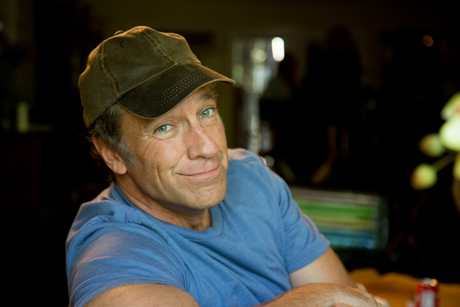
By Daniel Lai, associate editor of the Detroiter.
Mike Rowe is on a one-man mission to bring national attention to the importance of skilled trades training across the country. As the former host of Discovery Channel’s hit show “Dirty Jobs,” Rowe spent countless hours traveling to all 50 U.S. states and working more than 300 different jobs, transforming cable television into a landscape of swamps, sewers, ice roads and coal mines. Based on these experiences, Rowe launched the mikeroweWORKS Foundation, which awards scholarships to students pursuing a career in the skilled trades; was featured on a TED Talk; testified before both the U.S. House and Senate; and eagerly speaks to just about anyone who will listen.
Taking his love of skilled trades even further, Rowe launched a new series titled “Somebody’s Gotta Do It” on CNN in 2014, joining innovators, do-gooders and entrepreneurs in their respective undertakings. Rowe recently sat down with the Detroiter to discuss the importance of shattering misperceptions of skilled trades and blue collar jobs in Michigan and the United States.
What sparked your interest as an advocate for the skilled trades?
That’s a long story. I grew up next to my granddad on a little farm in Baltimore, and he was a master electrician, plumber, steamfitter, welder and mechanic — the kind of guy who can build a house without a blueprint. I was always in awe of that talent, but sadly that gene is recessive because I didn’t inherit it at all and ended up in the entertainment industry. By the time “Dirty Jobs” came along, I was in my early 40s and he was fading and I wanted to do a show that looked like work because, at that point he had never seen me do anything on television that could be confused for actual labor. There weren’t many shows on TV either that paid an honest tribute to the jobs my grandfather grew up doing. He only had an eighth grade education, but he was heroic and in the back of my mind I wanted to do a show that tapped into that.
While filming an episode of “Dirty Jobs,” you worked as a bridge maintainer on the Mackinac Bridge. What stood out for you on that job?
So many things. That was a pivotal job. Optically it just looked like something most people have never seen. We did a pretty good job of shooting the episode and capturing the perspective of what those guys do day in and day out. It was also really significant to me because it was the first time a municipality never said “no.” We’re so used to people saying “I’m sorry we can’t let you do that.” As a joke, I was asking all sorts of things that I was sure they would say no to, like would it be OK to go down inside the towers under the water to paint one of those tiny honeycomb coffins and they said “yeah, we’ll let you do that.” At the end of the day, I asked, “What are the odds you will let me walk across that girder and up the suspension cable?” and they said, “Sure. You want to do that?” It was a perfect storm of good things. It was a very appreciative state and a bunch of passionate guys who were eager to show the world what they do to maintain the bridge.
The second season of “Somebody’s Gotta Do It” recently premiered on CNN. What sparked your idea for the show? Where do you find inspiration and how do you identify the “innovators, do-gooders, and entrepreneurs” you want to feature?
Ninety percent comes off my Facebook page. “Dirty Jobs” was programmed almost entirely by viewers and so is “Somebody’s Gotta Do It.” It started not just as a tribute to the work in skilled trades, but kind of an homage to people who were passionate about what they do and a little afflicted by their desire to do what they do. When we finished “Dirty Jobs,” I wanted to circle back to my original idea of a broader show about vocation, avocation and passion.
Read the complete article and more at Detroiter Magazine
